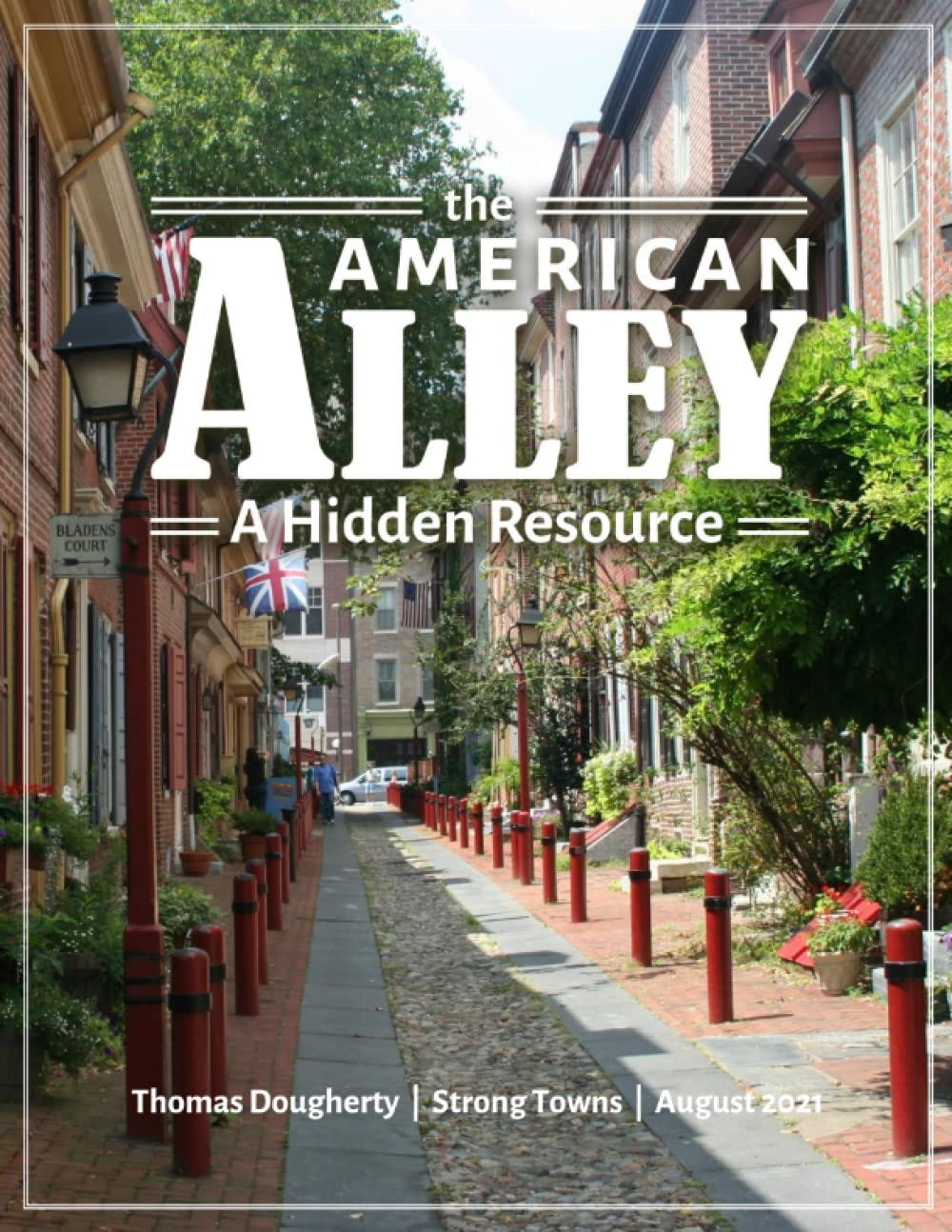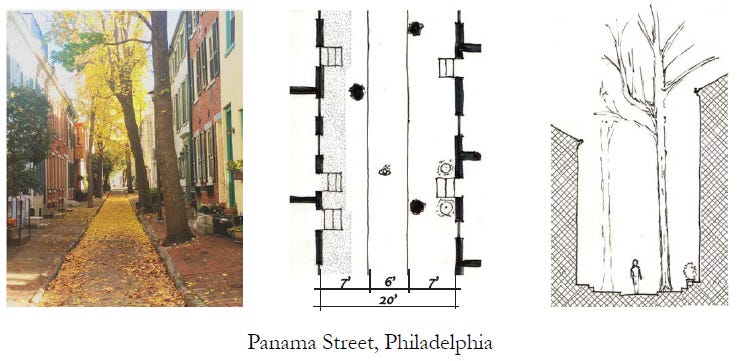Thomas Dougherty's American Alley
BEHIND THE MIC SERIES #6 | A Notre Dame Architect wrote a book on the forgotten geometry of affordability and beauty of backyard housing.
In this series, I’ll be reflecting on some of my favorite conversations from Seasons 1 and 2 of The Townbuilder’s Podcast, which I had the pleasure of hosting. Throughout these seasons, I engaged in in-depth conversations with nearly two dozen new town developers and designers. With the podcast set to relaunch in 2025 under the new host Levi Wintz, I wanted to revisit these meaningful episodes, sharing my favorite discussions along with some fresh reflections.
We don’t think much about alleys. That’s the problem. We assume they’re for trash, for garage doors, for the fire truck to squeeze by once a year.
But what if we’ve misunderstood the alley all along? What if that strip of cracked pavement behind your house is actually the most valuable — and most human — space in the American city?
Architect and researcher Thomas Dougherty has been studying alleys for years, and he’s come to a simple, radical conclusion: “There’s a huge amount of potential” buried in the back lot.
In his book, The American Alley: A Hidden Resource, he argues that alleys aren’t just leftovers from the 19th century — they’re the raw material for a more affordable and inspiring future.
Thomas and I discussed four reasons why alleys matter - their ever-changing raison d’etre, their natural ability to shape public space, foster citizen wealth, and strengthen communities. I’ll recap all in this post:
From Latrines to Forgotten Space
Thomas points out that we used to know what alleys were for. They were busy, bustling spaces — full of kitchens, wells, latrines, wood piles, coal bins, and smoke. Dougherty paints the scene vividly:
“All that infrastructure that fits into your cavity wall… heat, coal, wood, oil, water wells — they were often in alleys.”
But these weren’t just service zones. They were functional extensions of the house, designed for the messy work of living.
But by the early 20th century, alleys had been zoned out, paved over, or forgotten. Why?
Partly, it was new infrastructure: piped water and electricity meant cities no longer needed a separate right-of-way exclusively to isolate the messy business of urban living. But zoning played its part, too. As Dougherty explains, “Zoning was largely responsible for eliminating people living along alleys.”
Alleys became associated with poverty, fire hazards, and blight. Cities like Philadelphia used zoning to push out Black communities who had found a foothold on back lanes.
As regulatory and technological changes made the alleyways less viable for human habitation, we forgot what alleys could be. But this is changing.
ADUs as Street-Makers
Accessory Dwelling Units (ADUs) are having a moment — especially in the West, where backyard cottages and garage conversions have become one of the few legal ways to add housing. But Thomas sees something deeper. He sees a chance to reform the alley into a real street, and a real place.
“If we don’t develop [ADUs] with a mind to forming minor streets… we’re going to be recreating some of the same conditions that got alleys banned in the first place.”
That’s the key. An ADU isn’t just a building — it’s a chance to form public space. If you align the front door of the unit with a path, or add a garden wall, or line the alley with hedges, suddenly it’s not just the back anymore. It’s a place.
Thomas points to Charleston and Philadelphia as models — places where walls, not just buildings, define public space. He imagines alleys reborn not as infrastructure corridors, but as “pedestrian-scaled streets,” made beautiful by shared design language and human proportions.
Citizen Wealth Through Backyards
Here’s where it gets personal. Thomas believes that 1) the most powerful form of equity is ownership, and 2) ADUs unlock ownership for everyday people.
“There’s real value when an individual has the ability to own two houses on a single lot.”
This is subsidiarity in practice — putting decision-making power close to the ground. Homeowners become small-scale developers.







